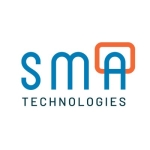What is our primary use case?
I have worked with most of the UiPath use cases. From 2017 to now, I have delivered more than 400 bots. I have worked in healthcare, energy, shipping, and other industries.
When it comes to manual processes, especially IDP and the combination of IDP and automation, the journey has been a bit difficult and challenging, but it has been worth it. Most other automation is straightforward. We take input from multiple platforms, put it into another platform, and so on. But with IDP, we have to read the document, validate the data, and then integrate it with the automation tool in UiPath.
I started integrating IDP and automation before UiPath Document Understanding and the Action Center were available. What I used to do was automate the process and then create a layout in ABBYY. I would then integrate the ABBYY layout into UiPath, evaluate the data, and then automate the rest. I did this in 2018 and 2019.
Now that we have our own Document Understanding and Action Center platform, I don't have to rely on any third-party tools for IDP. The combination of automation and IDP within a single platform has made a big impact on many businesses. It has helped them to reduce their annual efforts in data entry, reading documents, and correcting small errors in data extraction and copy-pasting.
I have seen the best results when IDP is combined with automation. It has reduced manual efforts by at least 80 percent. Automation is always helpful, but the combination of IDP and automation is even more effective.
In one example, we were able to deploy more than 700 bots for a single organization in the manufacturing industry. They had around 25 servers just to run the bots, but now they are running multiple bots on a single server. They are saving millions of dollars per month by using UiPath.
Overall, I think the combination of IDP and automation is a huge game-changer for businesses. It is helping them to save time, money, and resources.
How has it helped my organization?
Most of the elements we have right now as activities with this do not require us to work with the norm of 100 lines of code or anything like that. It is just drag and drop, so anyone can use UiPath from scratch and be approved within a couple of months. The platform itself is very easy to learn and use. I don't think there were any challenges at any point with respect to this.
UiPath enables us to implement end-to-end automation. We have many back-end processes that run without any manual intervention. We simply schedule the bots, and they run flawlessly. We also have a bot that generates reports for us. As a result, we have had end-to-end automation in place for almost a year now. We are very pleased with how it is working, and we believe it is a valuable feature.
The UiPath User Community is great. I am proud to be a part of the community, where I have earned the Community Moderator badge, the Bylaw badge, and the MM VPA badge. I have witnessed the incredible journey of the community, from a group of people who didn't know each other to a community that meets in person at least once a month. The quality of the answers in the forum is amazing. I have seen a few companies create internal competitions to see who can answer the most questions in the forums and receive prizes. These small gestures from the community make a big impact. I would say that the community has played a major role in the growth and deployment of UiPath. UiPath has never failed to surprise and value the community members. The company has never disappointed us, and it continues to support our efforts.
When we join the UiPath Community and become an MVP, we gain direct access to the company's product engineers. We can provide our feedback and reviews for every product and release, and we also have beta access to all products when we are eligible as an MVP. Every review, opinion, and idea that we provide to the product managers is taken seriously and reviewed. If it is valid, the product managers implement it. I think this is the best thing about being a part of the UiPath team, both as a team member and as an individual. I really like the core UiPath team very much.
We have UiPath both on-premises and in the cloud. I think we were able to make significant savings when we upgraded to the cloud, especially in terms of infrastructure costs, deployment, and upgrades. The dynamic nature of cloud computing has helped us to reduce costs and save time.
We often use the UiPath Academy courses. I believe that 80 to 90 percent of my team uses the Academy, and it is the main platform where we have learned to use UiPath. I recommend that everyone take the Academy courses. For anyone who wants to learn UiPath, the Academy is the best place because it has everything we need to know.
UiPath accelerates our digital transformation and reduces costs. We did not need to upgrade to expensive or complex applications to accelerate our digital transformation.
UiPath has reduced up to 70 percent of the human errors.
UiPath has helped free up staff time. We have citizen developers from UiPath who are using UiPath Studio X to save almost 70 percent of their daily time on email automation. Especially when it comes to process mining, they don't have to do the same update task; the processing is ready, and everything is ready to be given to the developers. Even the developers are saving time when using the RA framework for SAP or ERP applications, such as by creating and using libraries of common screens, selectors, and steps. This saves them at least 50 percent of their time, so they can focus more on research and development and new features.
What is most valuable?
Document Understanding and Action Center have added significant value to UiPath, especially for the IDP process.
What needs improvement?
There are a few businesses that are failing to generate their ROI. I think that's where UiPath needs to educate businesses so that they can choose the right product for them, whether that's the entire automation solution suite or just the individual products that they need. I think that educating businesses about this will help them a lot and make it easier for them to succeed.
When integrating with third-party tools, UiPath gives us the freedom to write our own code and integrate it. However, if we could get a repository of at least a few of the layouts for the GUI or AI Center, where we would only need to make minor changes, that would be helpful. For example, the files have a template that extracts all the information. I would just like to change a few things, but I don't want all of that. I know we can just hide it, but that won't help because processing the whole document extraction will still take the same amount of time. If we could get those codes in any of the repositories where we could make small changes to the existing code and then import them into our processes, that would be helpful. We do have all the code. We do have all the activities, but none of them are accessible or modifiable. We have to use them as is, or we have to create our own. Those are the only two options we have. If we could get the codes in the report that we want, and then we could make the changes and use them in our own code, I think that would help us more.
For how long have I used the solution?
I have been using UiPath for seven years. I started my journey in December 2016 and we started delivering projects to clients in 2017. I have been impressed with the evaluation of the UiPath products from 2017 to 2023. The features that we have been receiving in recent years are very good.
When I started as an automation engineer in 2017, people at companies like Sony and other networks and large companies were scared to share their processes and credentials due to security concerns. I have seen this challenge firsthand. However, now, companies of all sizes, including national banks, are looking at automation.
I have seen an incredible journey from 2017 to 2023. I am happy to have been a part of it.
What do I think about the stability of the solution?
What do I think about the scalability of the solution?
UiPath is scalable. We are able to upgrade anything.
How are customer service and support?
Whenever we have a challenge or similar issue, in rare cases, such as when there are multiple questions assigned to a support ticket, there may be a slight delay in technical support responding.
How would you rate customer service and support?
How was the initial setup?
The initial deployment is straightforward.
The deployment time depends on the complexity of the project, ranging from six weeks to four months. For a very simple UiPath automation project with multiple applications, we can complete the development, UAT, and deployment within six weeks. However, if the project involves IDP, validation, and other complex features, it may take three to four months to complete.
The number of people required for deployment depends on the complexity. I always suggest having proper planning. I would not let any of the junior developers deploy to production at any time. I would always have two different teams. This is my preference. Instead of having junior developers deploy to production with only one person, even if they are capable of doing it, I would suggest not giving access to everyone to deploy to production. Instead, they should reach out to the production support team, and the production support team should do a code review before the deployment. Once the code is reviewed, the production support team can publish the package to production.
What was our ROI?
I have seen organizations that have been able to generate an ROI of almost 100 percent, as well as organizations that have struggled to generate even a 10 percent ROI. Some companies are very good at knowing what licenses they have bought and how to use them, but I have also seen companies that have a whole suite of automation tools that they are not using, including process mining and test suites. They are still paying for all of these tools, but they are struggling to generate an ROI.
What's my experience with pricing, setup cost, and licensing?
The main complaint I receive about UiPath is the pricing. Many people purchase the entire suite, which can be expensive, even though they don't need all of the features. The pricing is also somewhat opaque for businesses of all sizes. Unless a company is a UiPath partner, it is difficult to customize the solution to pay only for the features that are needed.
What other advice do I have?
I would rate UiPath eight out of ten. We have experienced some automation processes that did not turn out as expected, especially with legacy applications, which can be challenging.
I have not seen any challenges with UiPath upgrades, but there are a few things to keep in mind. Consider a client with an on-premise deployment. The developers have returned their code, which is very old. After two or three years, the client is finally upgrading. During this time, a few activities may have changed drastically or been removed from UiPath because they have been merged into other activities. In these cases, we need to do some maintenance to ensure that the upgrade is successful. We need to check that everything is ready and that the upgrade looks good. This may take some time, but it is the only maintenance that is required.
Which deployment model are you using for this solution?
Public Cloud
Disclosure: PeerSpot contacted the reviewer to collect the review and to validate authenticity. The reviewer was referred by the vendor, but the review is not subject to editing or approval by the vendor. The reviewer's company has a business relationship with this vendor other than being a customer: Partner




















